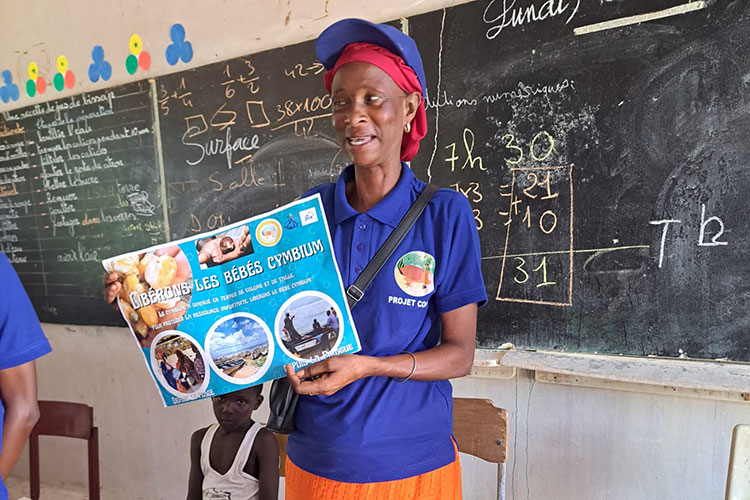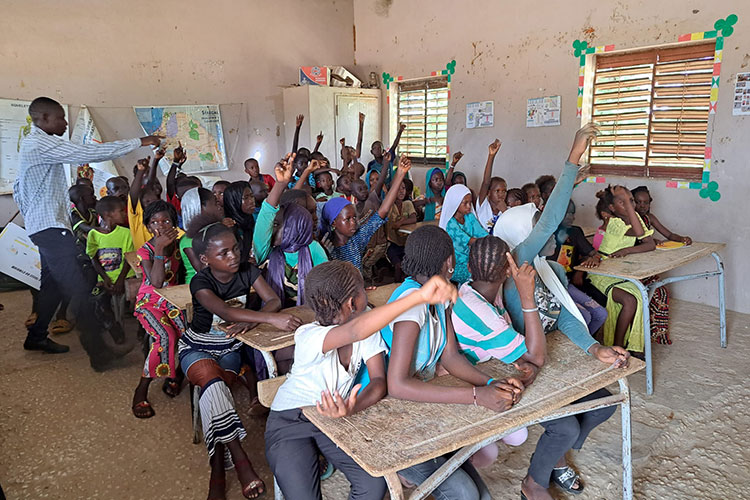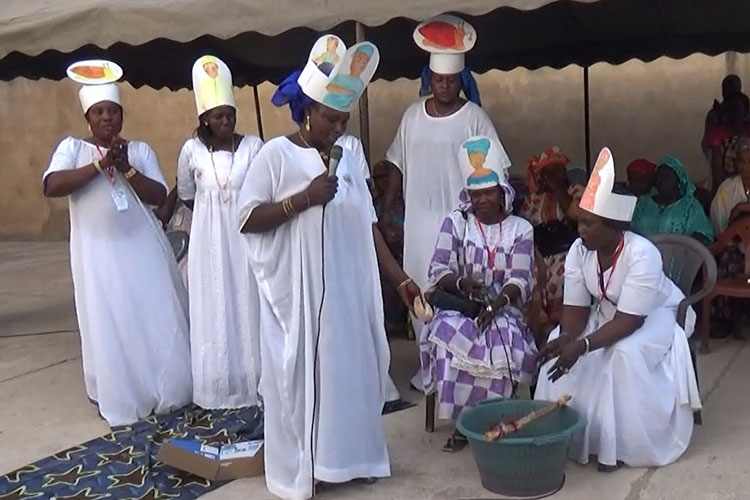4.3.1 Dissemination of an activity to more people in the target area
To disseminate an activity to more people in the target area, it is necessary to communicate the meaning, necessity, and benefits of the activity to the target population. In projects on resource management supported by external donors, the counterpart agency staff or leaders of resource management organisations often serve as contact points to discuss and agree on the activities to undertake, and initiate them. In such projects, the counterpart institutions and leaders of the resource management organisations are expected to disseminate the activities to the local people.
However, in many West African countries such as Senegal, where the extension worker system has not taken root, the limited number of counterpart officials and resource management organisation leaders can communicate with only a limited number of people in the target area. Thus, it is necessary to consider an effective way for dissemination. The following are three approaches for such purpose.
- Introduce approaches to reach out directly to local population
- Plan and implement programs to raise people’s interest, such as environmental week or some kind of campaign
- Utilize existing annual events and local institutions that are rooted in the daily lives of local population for dissemination activities.
Introduce approaches to reach out directly to local population
One approach that JICA has applied since 2001 in rural and community development projects in Senegal, Malawi, and Madagascar is the ‘Participatory Rural Development and Resource Management by Integrated Training for Equal Opportunity (PRRIE) approach’ (hereinafter PRRIE approach), which has been applied directly to many local people. This approach involves training community instructors to serve as a hub for disseminating information to the community and establishing a network of contacts covering the entire population in the target community. For external donors, this approach and the budget required for it should be built into the project design.
If the activity in question is not built in such a way, then the approaches shown in II and III below should be tried.
10. Five principles of the PRRIE approach
The PRRIE approach is a method that provides equal-opportunity training to the local population to build the capacity of the majority of the population and motivate them to take the next necessary step. The training will be based on the following five principles.
- (1) Conduct training on-site;
- (2) Use local resources to implement the training;
- (3) Start with local needs;
- (4) Do not select participants; and
- (5) Train as many people as possible.[1]
When a specific resource management activity is identified as a community need, the information necessary to implement such activity is conveyed by TOT to a person who serves as the hub of a network of contacts covering the entire community (i.e. community instructors). The number of participants per training session is about 20, and the number of community instructors to be trained varies depending on the size of the target area.
Plan and implement programmes to raise people’s interest, such as environmental week or promotional campaign
As a way to directly approach many local communities in the target area with resource management activities, it is possible to aim to boost such resource management activities by raising the interest of many people by organising events, such as planning and executing an environmental week event or promotional campaign. For example, as mentioned in the section on ‘Introduction of measures to enhance motivation’, a campaign to release juvenile cymbidiums into multiple communities across Grand Côte and Petit Côte was held to raise the interest of more people in the target area.[2]
Use existing annual events and local institutions that are rooted in the daily lives of the local population for dissemination activities.
Even if a campaign or event is launched, its effectiveness will be limited if the campaign reaches only a small portion of the population in the target area. By directly communicating the purpose of the event to a large number of community members through various opportunities, the number of people who learn about and participate in resource management activities will increase dramatically.
In addition to reaching out to the central organization that serves as the contact point for resource management activities, it is necessary to organize various opportunities to raise awareness on resource management activities, such as environmental education classes for teachers and students of local elementary and junior high schools, and a festival organized by women’s groups in the community on International Women’s Day, an annual event.[3]
37. Sensitisation of schoolteachers and students through environmental education classes
In any target area, as participants in resource management activities, children are just as important as adults. This is because, by encouraging children to participate in environmental education classes, interest in the global environment and sustainable use of resources will grow among them, who will then take this interest home and help raise an interest in resource management in their own families. COPAO, a JICA project, provides children with environmental education on the purpose and significance of releasing juvenile cymbium, which may lead to the children mentioning the topic at home and becoming interested in resource management. The children who took part in the environmental education class brought up the topic at home and participated in collecting and releasing juvenile cymbidium shells at the beach.


38. Sensitisation of women through the International Women’s Day festival
In the festival for International Women's Day on 8 March 2023, a skit on sustainable use of fishery resources performed by village women was performed to promote resource management activities to the women gathered at the festival, both from in and out of the community. Through the skit, the activities to release juvenile cymbium shellfish were promoted directly to the target women, thereby raising awareness on the activities and dramatically increasing the number of participants in them.


1. Noda, Naoto (2017), “Community Development through Equal Opportunity Training Implementation: Basics and Practice of the PRRIE Approach,” Textbook of International Cooperation Series 4, Hitonomori, p. 1-23.
2. See 《Learn from real-life experience 33》Campaign of releasing baby cymbium to reinforce the motivation (p. ) and Casebook 3-25.
3. The number of cymbium juvenile released during the campaign targeting CLPA Sindia Sud from April 2022 to August 2023 was 34,640 in the 12 months to March 2023. As a result of direct appeal to women at the World Women’s Day Festival held in Nyaning Village, Sindia Sud, in March 2023, 45,277 large number of juvenile were released in the four months to August 2023.